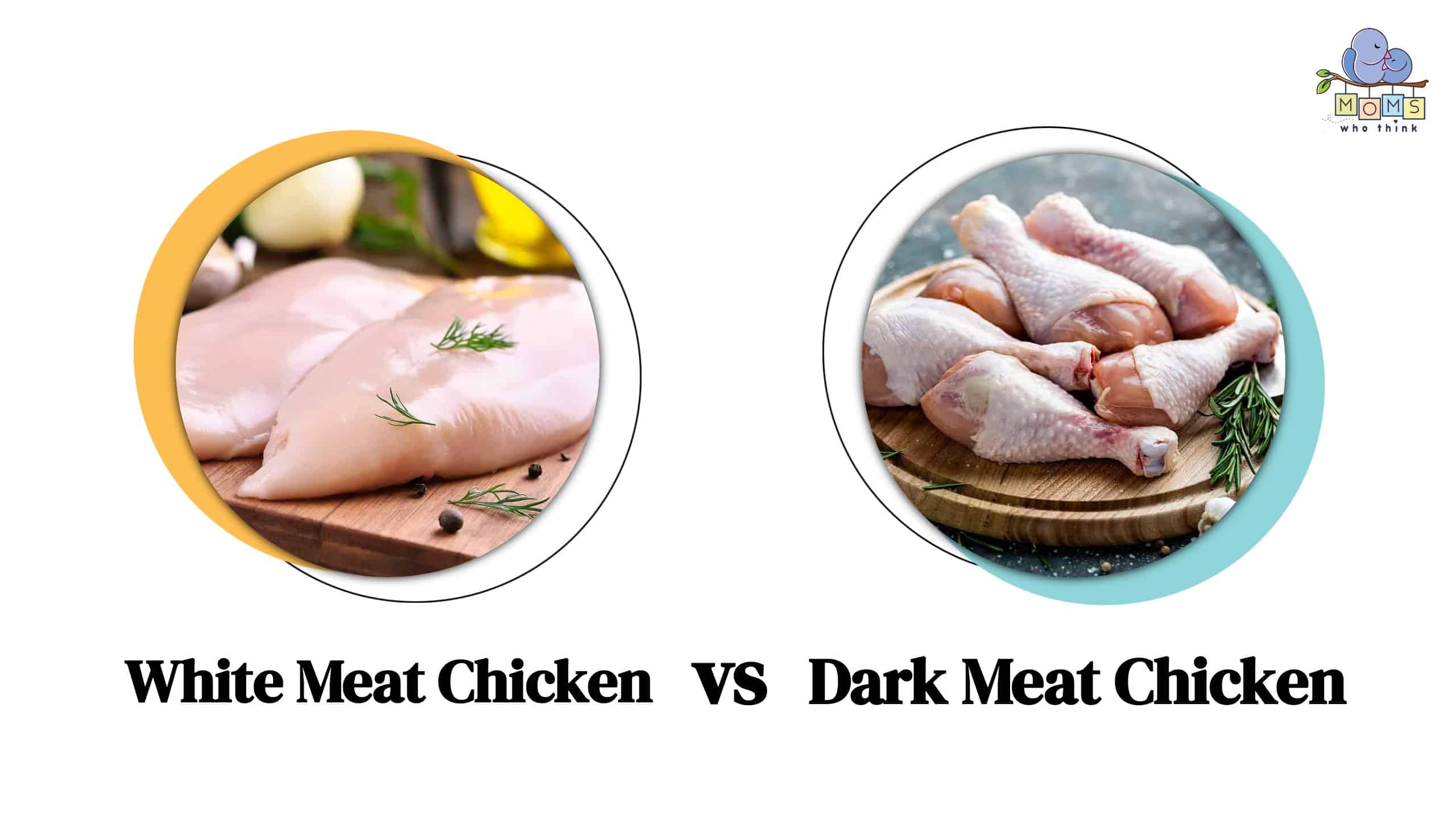Chicken is one of the most commonly consumed meats worldwide. It is a lean source of protein that is versatile, affordable, and easy to cook. Chicken can be divided into two main types – white meat and dark meat. But what exactly is the difference between the two?
In this article, we’ll explore the key differences between white and dark chicken meat in terms of nutrition, taste, cost, cooking methods, and health impacts.
White Meat
White meat comes from the breast and wings of the chicken. It has a pale color when raw and turns white when cooked.
White chicken meat is considered the leaner cut with lower fat and calories compared to dark meat. A 4 oz serving of skinless, boneless chicken breast contains around 140 calories and 3g of fat.
The mild flavor and texture of white meat works well in dishes like chicken salad, stir fries, fajitas, and casseroles. It can also be used in pasta, sandwiches, wraps, and tacos.
However, white meat is prone to drying out during cooking due to its low natural fat content. Proper cooking methods are needed to keep it juicy and tender.
Dark Meat
Dark meat chicken includes the thighs and legs. It has a darker color from a muscle protein called myoglobin which helps deliver oxygen to active muscles.
Dark chicken meat is juicier, more flavorful, and less likely to dry out during cooking than white meat. A 4 oz serving of skinless, boneless chicken thigh has around 190 calories and 9g of fat.
The rich taste of dark meat works great in stews, curries, soups, and braises. It’s also perfect for grilling, frying, roasting, and sautéing.
Nutrition
Both white and dark chicken meat provide high-quality protein and important vitamins and minerals like niacin, vitamin B6, selenium, and phosphorus.
However, dark meat contains more iron, zinc, and B vitamins than white meat. A serving of chicken thigh has twice as much zinc as chicken breast, a mineral vital for immunity and health.
So while white meat is lower in calories and fat, dark meat offers more micronutrients. Choose white or dark meat depending on your nutritional needs.
Cost
Chicken thighs and legs are often more economical to purchase than breasts and wings. This makes dark meat a budget-friendly protein option.
Cooking Methods
-
White meat can dry out easily when overcooked, so moist cooking methods like poaching, braising, or pan frying are best. Brining helps retain moisture.
-
Dark meat stays juicier during cooking and holds up well to dry heat like grilling, roasting, and broiling.
-
For both types, use a meat thermometer to ensure doneness without overcooking. Chicken is safe to eat at an internal temperature of 165°F.
Health Concerns
There are a few health concerns specific to each type of chicken meat:
-
Consumption of processed or charred white meat has been associated with a higher risk of breast cancer and heart disease in some studies, although more research is needed.
-
The higher saturated fat content of dark chicken meat may be a concern for those limiting fat for heart health compared to leaner white meat. Both are still relatively low in saturated fat overall.
While both types of chicken can be part of a healthy diet, understanding the differences allows you to choose the right cut for your recipe, cooking method, nutritional needs, taste preferences, and budget. Keep this guide in mind when deciding between white and dark chicken meat!

Dark Meat vs. White Meat
But the real question is which one do you want to eat? They both have their pros and cons depending on what you need. Do you want to eat the one that’s healthier or has a certain taste? The best way to start when comparing dark meat and white is what’s in them.
What’s in the Meat?
The legs and thighs of birds carry the weight of the animal, so they need different vitamins and minerals to do that than their wings. This means that when you eat dark meat, your body processes different nutrients. For this reason, dark meat has more:
White meat, on the other hand, because it’s found in the breast and wings, needs nutrients that allow it to fly. The muscles in a bird’s breasts and wings need to produce a great amount of force and need a lot of energy to fly. Because of this, white meat has:
- Less fat
- Less myoglobin
- More carbohydrates
- Fewer calories
White Meat vs. Dark Meat Chicken: Nutrition, Flavor, and More!
FAQ
Is black chicken better than white chicken?
Research suggests that the dark meat of black chicken breeds like the Kadaknath provides a rich source of carnosine. Carnosine is a protein-building compound that has antioxidant properties, so eating black chicken meat may be a healthier choice than white meat.Aug 16, 2024
Why does dark meat chicken taste different?
Even in a busy commercial kitchen, it’s hard to mess up a naturally juicy chicken thigh. Dark meat is more flavorful than white meat. Dark meat offers a rich, robust, and savory taste. The greater degree of activity in dark meat muscles develops more chemicals, proteins, and fats that create a richer flavor.
What’s the difference between white meat and dark meat at Popeyes?
White meat cuts are the breast, breast tenders and wings. Dark meat cuts are the drumstick and thighs. The color differences occur because they are two separate types of muscle.
